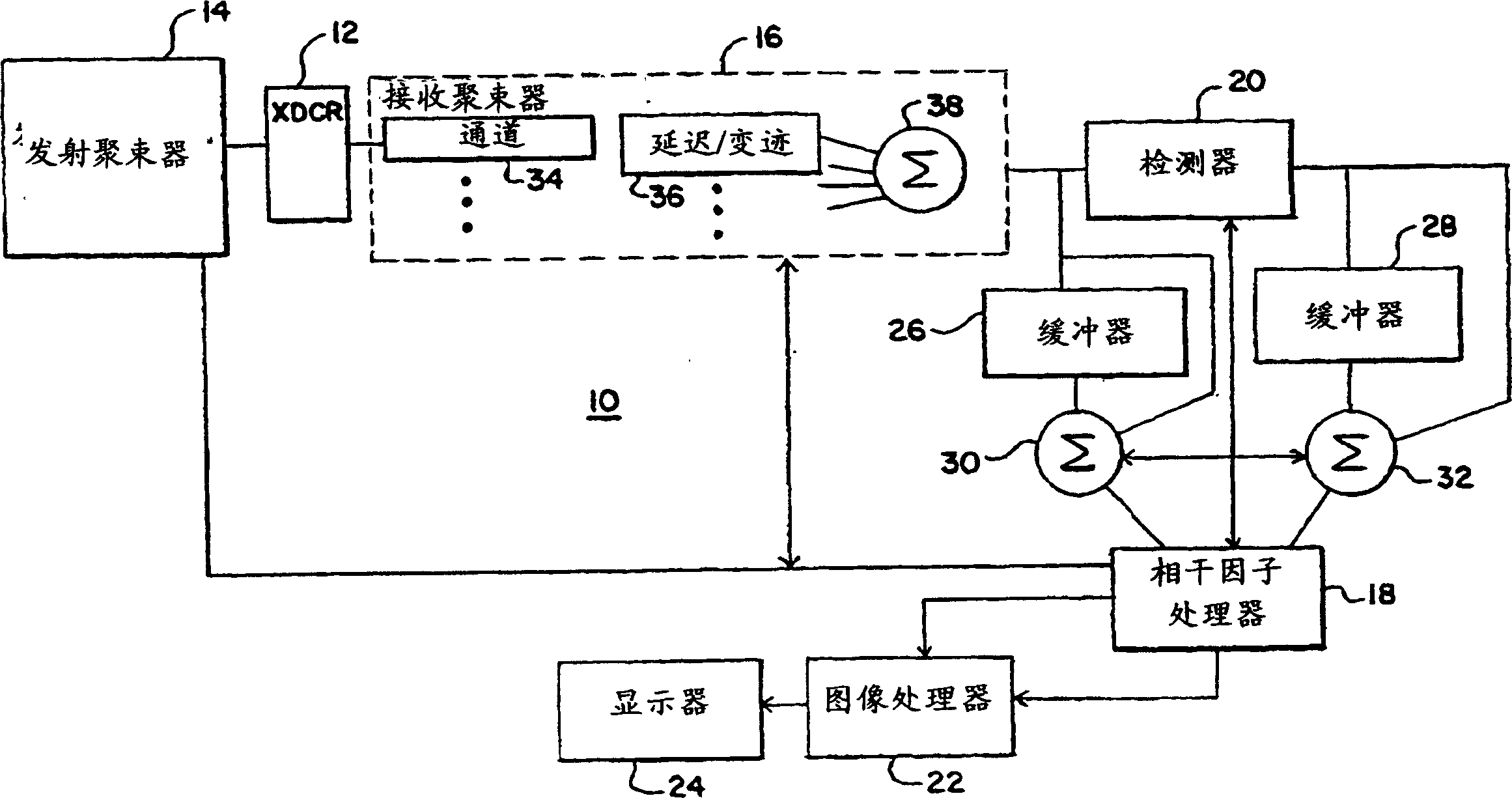Coherence factor adaptive ultrasound imaging
A coherence factor, ultrasonic imaging technology, applied in ultrasonic/sonic/infrasonic diagnosis, application, material analysis using sonic/ultrasonic/infrasonic waves, etc.
- Summary
- Abstract
- Description
- Claims
- Application Information
AI Technical Summary
Problems solved by technology
Method used
Image
Examples
Embodiment Construction
[0013] Acquire a set of NxM signals from the object, where N is the number of array elements and M corresponds to changes in data acquisition and / or processing parameters. These parameters include transmit aperture function, transmit waveform, receive aperture function and receive filter function in space and time. The coherence factor is calculated as the ratio of the energy summed coherently to the energy summed at least partially incoherently of these signals. In one embodiment, the coherence factor image is calculated in the image domain as a function of the coherent and incoherent summation of the partial images formed with different parameters. At least one parameter is modified as a function of the coherence factor. In one embodiment, the coherence factor is used to modulate the grayscale or color of the image synthesized from the partial images.
[0014] figure 1 One embodiment for an adaptive ultrasound imaging system 10 is shown. System 10 is an ultrasound imagin...
PUM
 Login to View More
Login to View More Abstract
Description
Claims
Application Information
 Login to View More
Login to View More - R&D
- Intellectual Property
- Life Sciences
- Materials
- Tech Scout
- Unparalleled Data Quality
- Higher Quality Content
- 60% Fewer Hallucinations
Browse by: Latest US Patents, China's latest patents, Technical Efficacy Thesaurus, Application Domain, Technology Topic, Popular Technical Reports.
© 2025 PatSnap. All rights reserved.Legal|Privacy policy|Modern Slavery Act Transparency Statement|Sitemap|About US| Contact US: help@patsnap.com


